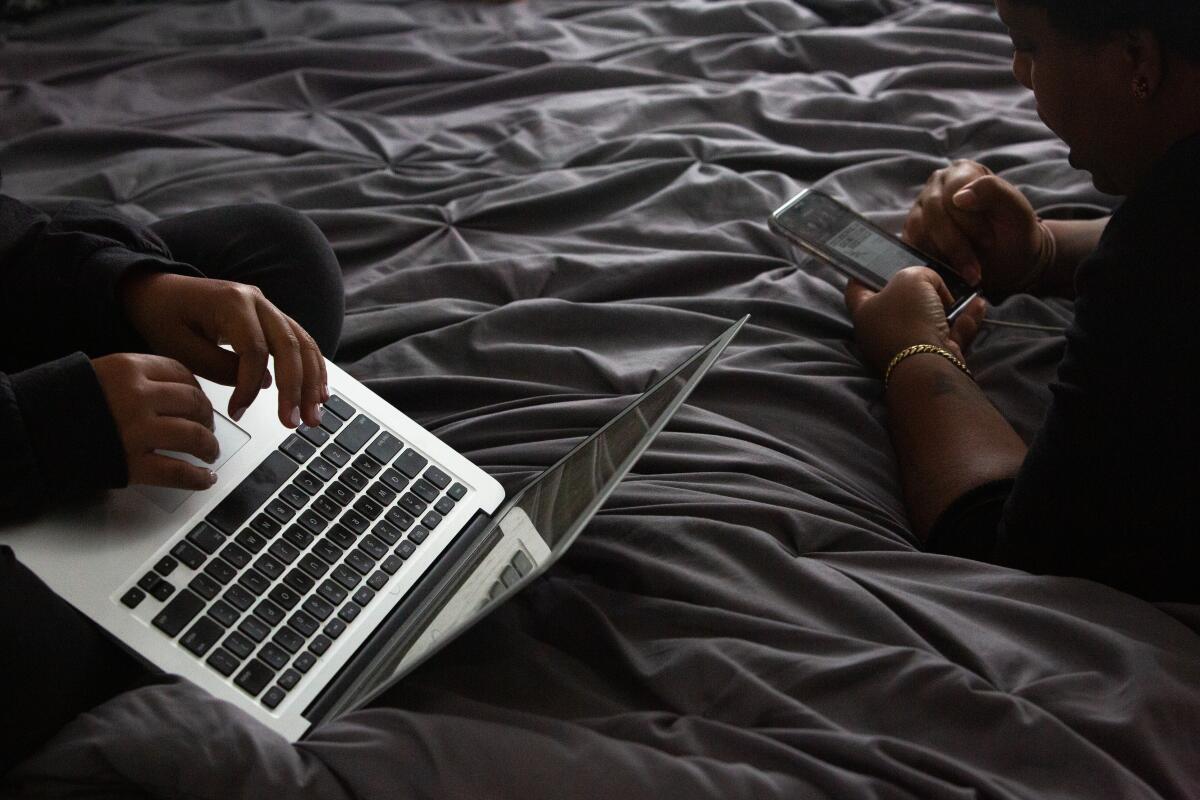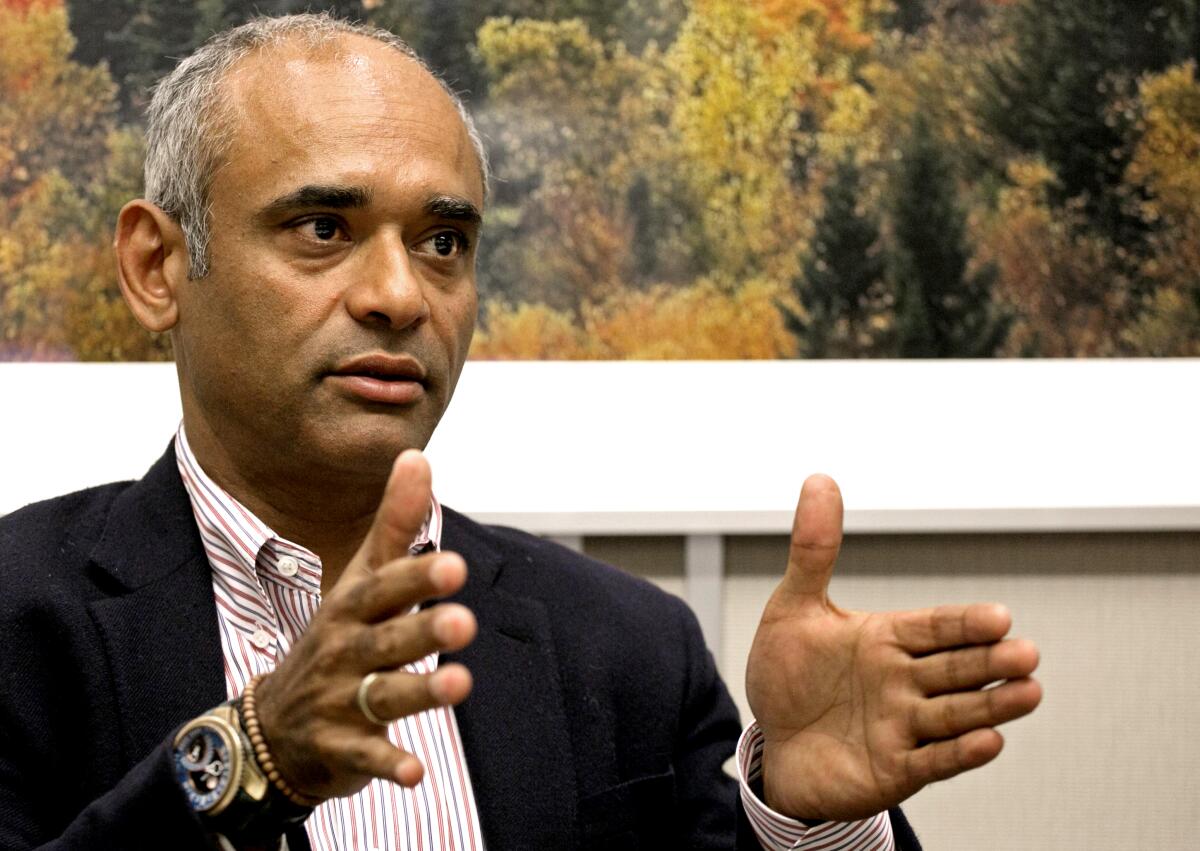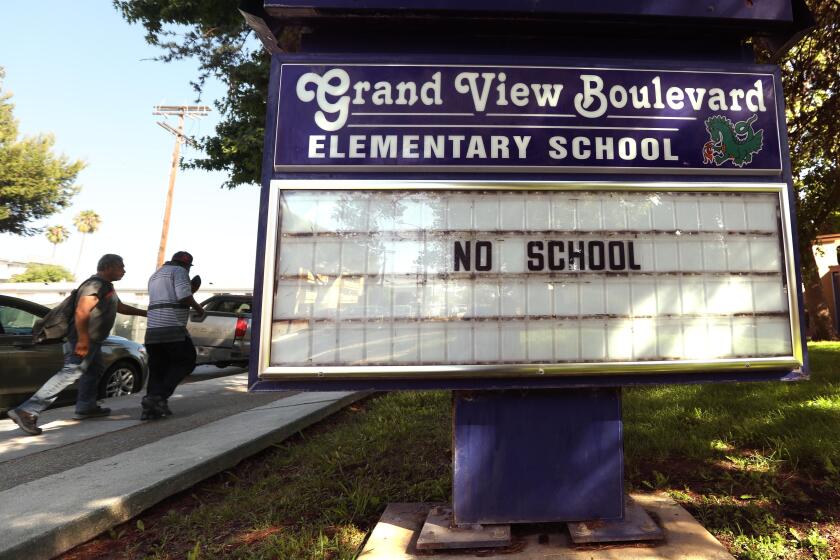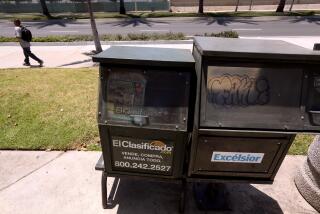Tech companies step up to bring free Wi-Fi to L.A. public housing residents

- Share via
Nearly 9,000 residents of public housing in Los Angeles will receive free broadband internet access for the rest of the 2020-21 school year as part of a new partnership between the city, Microsoft and the start-up internet service provider Starry.
Starting in early November, residents of the Jordan Downs, Nickerson Gardens and Imperial Courts housing projects in Watts and the Pueblo del Rio complex in Central Alameda will be able to sign up for the service. They join residents of Mar Vista Gardens, who have had access since August.
The new partnership comes as L.A. schoolchildren settle into another month of remote learning and parents and public policy makers alike worry that lower-income students will be left even further behind as they struggle to keep up at home.
“COVID-19 has reinforced what was already a clear and unmistakable fact: Internet connectivity is not a luxury in our time,” Mayor Eric Garcetti said in a statement. “It’s an absolute necessity for parents trying to work, students looking to learn, and families and friends seeking to communicate.”
Low-income Angelenos, and particularly residents of L.A.’s public housing, have struggled with internet access for years. Telecom companies have proved reluctant to build out infrastructure to housing developments where residents can’t afford high-cost internet and cable packages. The cinderblock construction of Housing Authority of the City of Los Angeles properties such as Nickerson Gardens makes new wiring even more expensive, and if residents pay for wireless hot spots to get online, the cinderblock construction often blocks the signal.
If broadband internet is even an option, the paperwork is another hurdle to overcome. Many internet service providers require proof of income to qualify for low-income programs, some require credit checks before leasing out equipment, and if a company sees any history of nonpayment — whether it’s for a landline phone bill in the 1990s or a cable bill last week — they often can ban residents from their services.
But the biggest obstacle is often price. The city has been working with telecom companies to reduce costs for residents, who can find resources for internet access at the city’s Get Connected Los Angeles website or by calling 311. This new partnership erases the price problem entirely (at least until the end of the school year).
María Peñaloza, a resident of Mar Vista Gardens since 2003, said that when the pandemic hit and her husband lost his job, their nearly $80 internet bill was one of the first expenses to get cut. That made things difficult for them and their three daughters living at home — one in grade school, another in middle school, and the third in college — and made it more difficult to video-chat with their fourth daughter, who had moved out.
“It was really difficult, not being able to connect,” Peñaloza said. So far, the Starry service has proved more reliable than the wired internet she paid for in the past.
Starry is part of a new wave of wireless internet service providers, or WISPs. Traditional ISPs run copper or fiber-optic lines into each housing unit from a trunk line, which customers then connect to a modem and wireless router to get Wi-Fi in their homes. WISPs, on the other hand, connect a powerful wireless transmitter to the trunk line and then attach a small receiver unit to each building, without having to run cables between the two. That receiver unit hooks up to a building’s existing wiring system, whether that’s coaxial cables or old-school phone lines, which connect to Wi-Fi routers in each customer’s home.

Chet Kanojia, Starry’s chief executive, said the company was founded on the principle that fast internet should be available to everyone in society — and the lower installation costs that come with the WISP model make partnerships like this possible.
“We have a very low-cost network,” Kanojia said, “and broadband tends to be a very profitable business as well, so we can make our contribution.”
The company first rolled out a broadband network for HACLA residents at Mar Vista Gardens earlier this summer as part of its Starry Connect product line, which is available to public and affordable housing residents across the country, provides 30-megabit upload and download speed connections for $15 a month, and includes the first six months free. But once the reality of a remote-learning school year kicked in in August, the company reached an agreement with HACLA to provide the service for free to all residents.
Kanojia said Starry’s program is distinct from other ISPs’ low-income offerings for two reasons. First, it actually falls under the federal definition of broadband internet access, which requires download speeds of more than 25 megabits. Second, many programs require customers to prove their low-income status — HACLA residents only need to provide their address and can sign up on the spot.
“If you’ve ever needed anything in your life, having to articulate that need and prove it to someone can be demeaning,” Kanojia said. “We want our customers to feel like they’re not being separated out or treated separately because they’re part of this program.”
The digital divide still harms tens of thousands of L.A. students still without computers and internet access when they must learn online.
The program’s expansion to four more HACLA properties came about with financial and logistical support from Microsoft. The company provided Starry with a grant to build out the infrastructure in HACLA properties, and will also provide financial support to help residents get free and affordable devices and training.
The tech giant has been working on building out rural broadband access with its Airband program since 2017, and announced this summer that it would start addressing the digital divide in urban communities as well as part of its commitment to racial justice. It chose L.A. for a pilot program.
Vickie Robinson, general manager of the Airband program for Microsoft, said that she hopes the HACLA program will provide a template for quickly closing the digital divide, especially among Black Americans, in the coming years.
“Unlike in rural communities, where there’s often no option” for internet access already in place, Robinson said, urban communities frequently have internet infrastructure nearby but are underserved or simply can’t afford it. “This is America. We should be able to do this.”
The need is acute. The FCC’s official numbers show that broadband internet is available throughout Los Angeles County — but Microsoft’s own research has found that only 64.5% of Angelenos actually use the internet at broadband speeds.
In the low-income areas of Los Angeles surrounding the newly connected HACLA developments, 25% of families with school-age children have no home internet access at all or rely on mobile phones to access schoolwork, according to a survey published in September by researchers from USC and the Partnership for Los Angeles Schools.
The survey focused on areas served by the partnership, which manages 19 L.A. Unified schools in South L.A., Boyle Heights and Watts that enroll 14,200 children. It also found that although nearly three-quarters of families had lost income or experienced food insecurity during the pandemic, approximately a third had still spent hundreds of dollars to activate internet services or buy devices to enable their children to sign in to school remotely.
Any program that can reduce that burden and increase access is a net good, said Stephen Aguilar, an assistant professor at the USC Rossier School of Education who helped compile the report.
“One of the things we’ve found is that live instruction matters a lot,” Aguilar said. “If high-speed internet enables more live instruction or more stable live instruction, that helps with engagement and with parent perceptions of how their kids are doing.”
But Aguilar worries that stopgap measures don’t go far enough.
“Initiatives like this are great. Everyone’s putting up these temporary structures,” Aguilar said. “But like all temporary structures, you need to replace it eventually with something stable.”
Providing free high-speed internet access through the school year will help keep some students from lagging too far behind, but Aguilar said the need for remote learning won’t stop then.
“In the long run, remote learning is going to be worse for communities that are suffering because they don’t have access to other resources,” Aguilar said. “The time to catch up, or try to catch up, would be the summer, but that’s when the internet is going to be cut off.”








